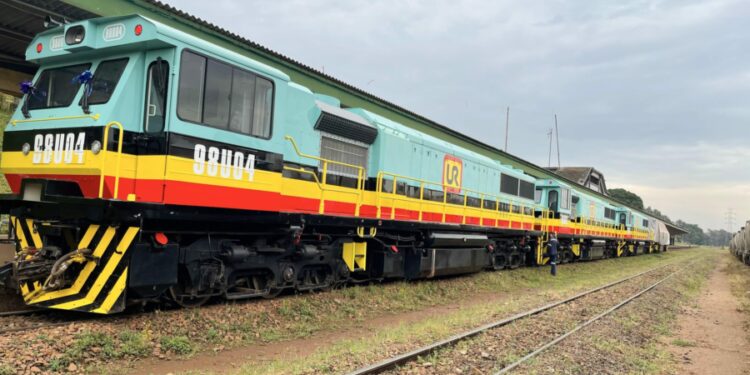or this headline Economists warn against wasteful spending in UGX 80 billion locomotive lease for Uganda Railways
KAMPALA – A controversial UGX 80 (about $22 million ) locomotive lease deal between Uganda Railways Corporation (URC) and M/s Auto Ports Freight Terminals Ltd has drawn sharp criticism, with critics and economists questioning its financial viability and the potential misuse of taxpayer money.
The deal, which seeks to lease three locomotives for cargo transport, is raising alarm over the high costs and its timing. URC is currently in negotiations with the Kenyan company, which will provide the locomotives under a 10-year lease agreement. Although the URC Board has given the green light for negotiations, growing concerns are being voiced regarding the substantial daily costs involved.
Under the proposed agreement, URC would pay $2,500 per day for each of the three locomotives, amounting to $7,500 per day. This translates to an annual expenditure of approximately $4.94 million (UGX 18.5 billion) for leasing these locomotives. Critics have questioned the necessity of such a large financial commitment, especially considering Uganda’s long-term railway plans, which include the construction of the Standard Gauge Railway (SGR) expected to provide new locomotives and infrastructure in the near future.
Several economic experts have dismissed the leasing deal as an unsustainable financial burden, pointing out that Uganda is already grappling with a heavy debt load. They argue that spending billions of shillings on a short-term solution, such as leasing locomotives for a decade, instead of focusing on long-term infrastructure investments, could worsen the country’s fiscal challenges.
The need for additional locomotives arises from ongoing operational challenges at URC, which currently operates just four mainline locomotives, of which only two are functional. According to URC management, these locomotives are inadequate to meet the country’s growing cargo transportation demands, with the corporation only managing to transport around 25,000 tons of cargo per month – a fraction of the rail network’s capacity. Compounding the issue is the inadequate state of the Kenyan rail network, which also faces shortages of locomotives and poor track infrastructure.
The proposal to lease locomotives was made by Auto Ports Freight Terminals Ltd, a company that operates freight terminals in Mombasa and Nairobi. The company argues that without additional locomotives, Uganda risks losing market share in the regional transport sector. They also emphasize the importance of expanding the rail market to stabilize commodity prices in Uganda.
In a series of communications obtained by this publication, Auto Ports Freight Terminals Ltd emphasized the urgency of acquiring three locomotives to secure Uganda’s position in the transport market and alleviate pressure on the country’s transport systems. The company claims that leasing these locomotives would allow Uganda to better utilize the existing railway infrastructure in both Uganda and Kenya, while also facilitating trade through the Mombasa and Nairobi ports.
However, within the Ministry of Works and Transport, there is growing concern over the wisdom of committing such a significant investment, particularly as the SGR project is set to deliver more locomotives in the coming years. Additionally, the ongoing negotiations surrounding the SGR project, which includes the provision of at least 10 new locomotives, raise the question of whether the current leasing deal will soon be redundant.
Moreover, the potential financial strain on taxpayers has been underscored by the high leasing rates involved. At an average of $2,500 per day for each new locomotive, critics argue that Uganda could explore more cost-effective alternatives, such as purchasing locomotives outright or investing in the repair and maintenance of existing assets.
Further complicating the matter, URC’s Managing Director, Mr. David Musoke Bulega, revealed that while URC plans to purchase four locomotives with funding from the African Development Bank (AfDB), these would not be available until 2028 or 2029. With Uganda’s cargo transportation expected to increase significantly in the coming years, Bulega has suggested that leasing could be the only viable option to bridge the gap until new locomotives are available. However, even after the AfDB-funded locomotives are delivered, URC would still need additional locomotives to meet future demand.
Given these ongoing concerns, some fear that the locomotive lease deal could become another “white elephant” project, wasting billions of shillings with little return on investment. Whether the deal will proceed as planned or be scrapped remains uncertain. What is clear, however, is that the Ministry of Works and Transport, along with Uganda Railways Corporation, is under intense scrutiny from the public, economists, and civil society as they assess the financial implications of this $22 million lease agreement.
Do you have a story in your community or an opinion to share with us: Email us at editorial@watchdoguganda.com










